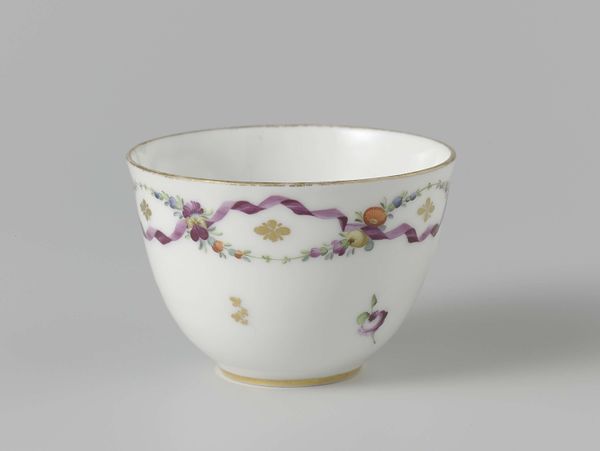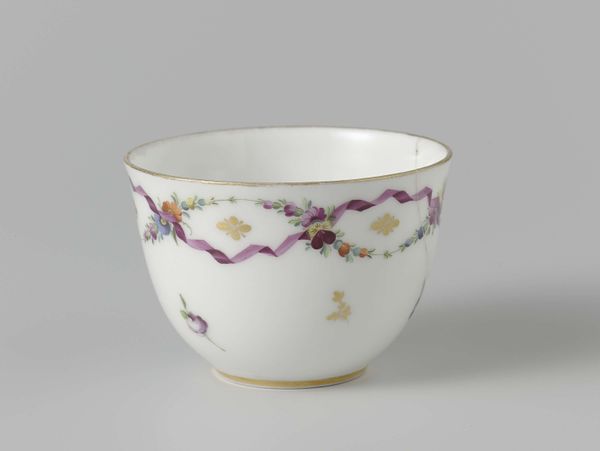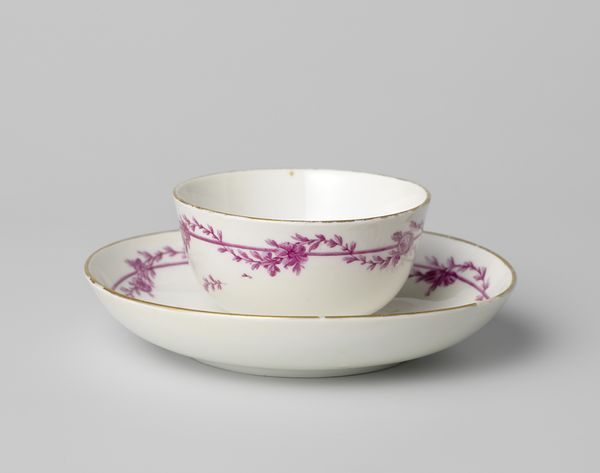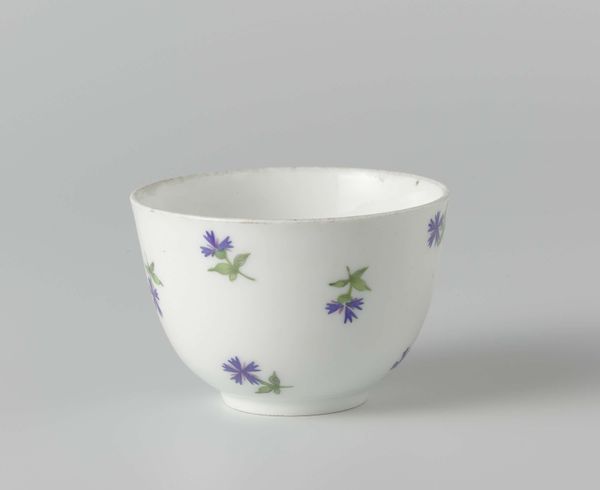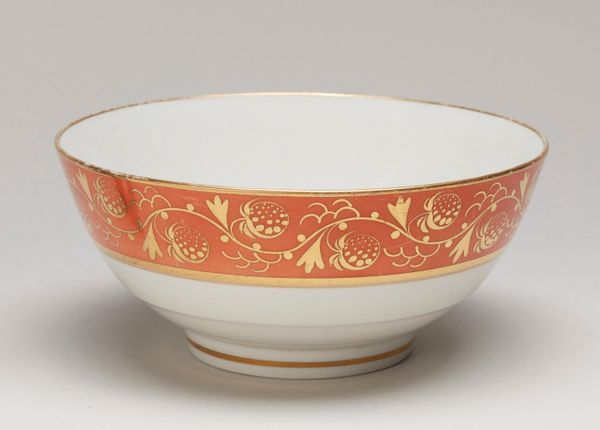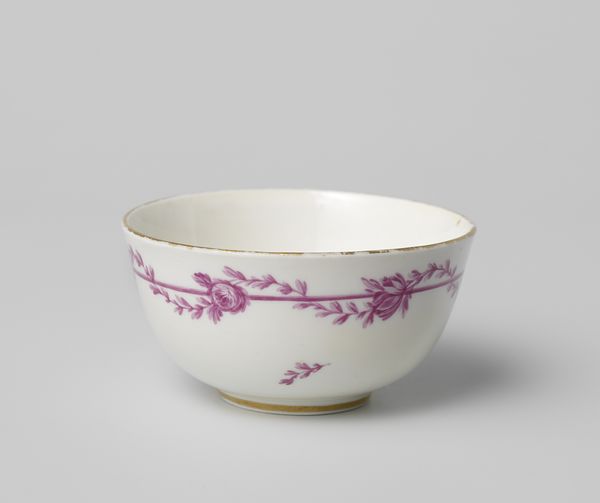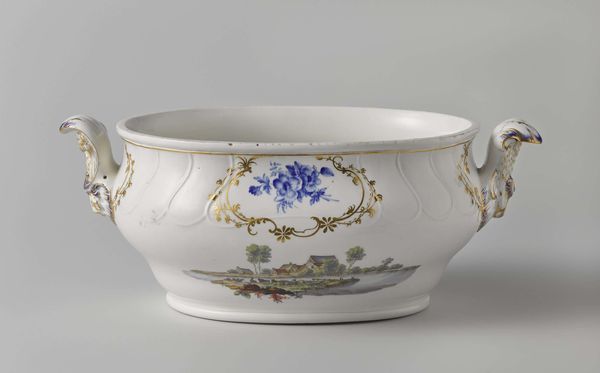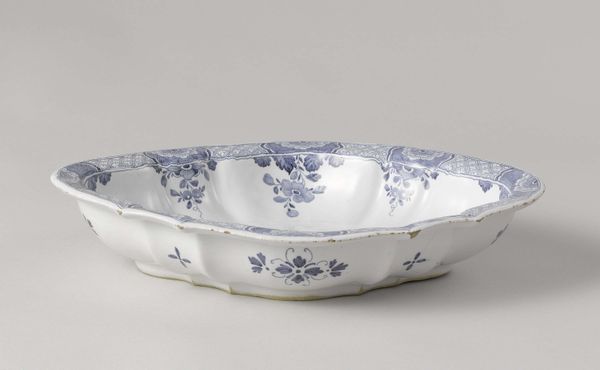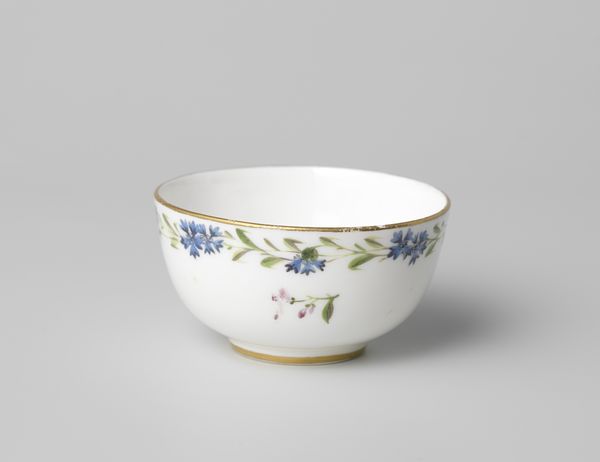
Spoelkom, beschilderd met strooibloemen en gouden lovertjes c. 1809 - 1814
0:00
0:00
koninklijkeporseleinfabriekdommerco
Rijksmuseum
ceramic, earthenware
#
ceramic
#
earthenware
#
stoneware
#
watercolour illustration
#
decorative-art
Dimensions: height 9.8 cm, diameter 21.3 cm
Copyright: Rijks Museum: Open Domain
Editor: Here we have "Spoelkom, beschilderd met strooibloemen en gouden lovertjes," a charming earthenware bowl crafted around 1809-1814 by Koninklijke Porseleinfabriek Dommer & Co. Looking at the delicate floral designs and the scattering of gold details, I am intrigued by how such fine artistry merges with an object seemingly meant for everyday use. How do you interpret the significance of this blend? Curator: For me, this bowl speaks volumes about the interplay between the decorative arts and societal structures. Notice the materials – earthenware, not the most precious. The painted flowers and gold leaf suggest an aspiration to luxury, a decorative facade to be applied by laborers. Who fired the piece and how were they trained? Editor: So you’re drawing attention to the contrast between the bowl's function and the decoration's implied value. Is the labor investment at odds with what would seemingly be used as a humble object? Curator: Exactly! The "strew flowers" evoke natural beauty, perhaps a fleeting sense of luxury that belies the underlying means of its production. We should consider the socio-economic factors: were these bowls affordable only to the upper class, or was their mass production making decorative art more accessible? Was the golden trim merely decorative, or does it represent global economies of resource extraction? Editor: That perspective is eye-opening. I initially viewed it as simply decorative, but I see how deeply entrenched its making is in material processes. Curator: By focusing on the process of how objects like this bowl are made and who makes them, we get a clearer picture of their societal significance, not simply the decorative effect they produce. Editor: I'll definitely be looking at everyday objects with a more critical eye from now on. Thank you! Curator: And I’m more inclined to see its functionality in broader patterns of production, not as merely being ornamental. It works both ways, wouldn't you agree?
Comments
No comments
Be the first to comment and join the conversation on the ultimate creative platform.
